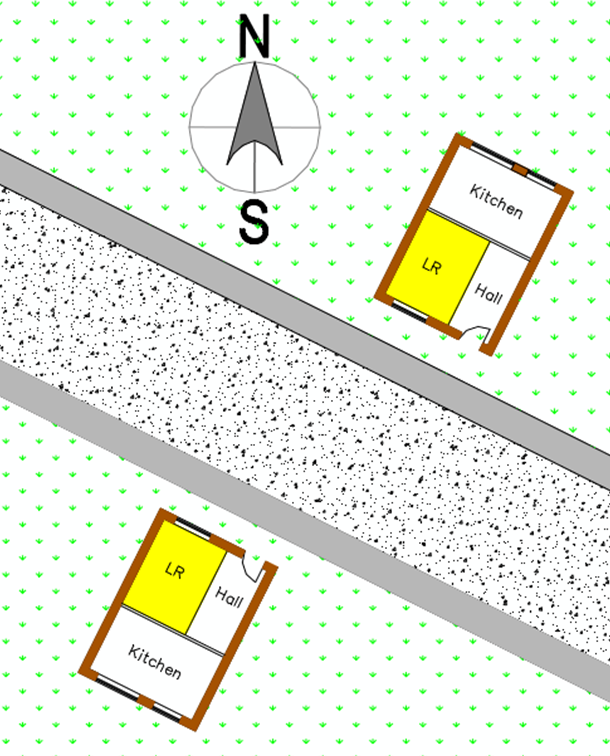A Complete Guide to Right to Light Legal Proceedings
In the complex realm of property development, comprehending the concept of Right to Light is crucial for homeowners, builders, and lawyers alike. This legal right allows individuals to receive natural light through windows and various apertures in their buildings, and it can significantly impact planning decisions. As evaluating a new project or renovation, a Right to Light survey becomes a crucial step in making certain that the project aligns with existing rights while avoiding disputes with neighbors.
As urban environments become increasingly dense and properties are developed in close proximity to one another, the significance of Right to Light evaluations has grown. This guide will examine the nuances of Right to Light surveys, emphasize their importance in property development, and deliver valuable guidance into the laws that govern light rights in the UK. Whether you are a builder initiating a new project or a property owner anxious about possible encroachments, grasping the procedure and implications of Right to Light can safeguard your interests and lead to successful outcomes.

Comprehending The Right to Light
Right to light is a legal requirement in property law that gives individuals or businesses the right to receive ambient light via specific apertures or windows on their premises. This right is chiefly established through case law in the UK, where a property owner can assert an easement for light based on uninterrupted enjoyment of light for a consistent period, typically 20 years. It serves to protect the light access to a property, guaranteeing that recent developments or alterations do not significantly impede or reduce this ingress.
The significance of the right to light in real estate development cannot be undervalued. When designing new buildings or additions, contractors must carefully consider the possible effects on adjacent properties' ingress to light. Neglect to consider this may lead to legal disputes, holdups, and extra costs. Understanding right to light is essential for developers to not only comply with regulations but also to maintain positive relationships with adjacent property owners and avoid contentious situations during construction.
To handle the challenges of right to light, it is important to commission a light access survey early in the planning phase. Such assessments evaluate the current light levels and predict how suggested modifications would affect them. This proactive approach aids spot any possible issues and allows contractors to adjust their plans as needed, thereby minimizing the risk of complaints from neighbors or legal challenges. Overall, a thorough grasp of the right to light is imperative for successful and law-abiding real estate development.
Legal Implications and Remedies
Right to light issues can lead to serious legal issues for real estate developers. When a landowner believes their light rights has been infringed, they may seek court remedies through the judicial process. It is important for developers to be aware that an encroachment can result in restraining orders preventing additional building or modifications, demands for monetary damages, or even mandates for modifications to the construction in question. Lack of knowledge of these associated risks can lead to significant setbacks and legal battles.
In cases where a violation of light rights is validated, several options are available. Homeowners may seek financial restitution to make up for the deprivation of light and the subsequent effect on their real estate value and livability. Additionally, they can pursue an injunction to stop any active projects that negatively affects their light rights. This situation underscores the necessity of considering entitlements to light issues early in the project timeline to avoid complications that can derail projects.
To navigate these regulatory challenges efficiently, consulting with a legal expert in light rights is recommended. Specialists can provide guidance into challenges you may face and help formulate proactive strategies to reduce risks. They can also help in discussing with affected parties to find friendly agreements, such as monetary settlements or modifications to plans, thus minimizing the likelihood of prolonged disagreements and ensuring smoother project completion.
Top Practices for Builders
To guarantee a successful project process, contractors should focus on conducting a illumination survey early in the project timeline. By recognizing potential lighting issues concerns before making planning applications, builders can detect and tackle any issues that may arise and reduce the risk of major disputes later on. Engaging with Right To Light Addiscombe who focus in Right to Light assessments can provide invaluable insights and help in navigating intricate regulations.
Developers should also foster clear communication with neighboring property owners. Initiatively discussing the influence of proposed developments on their light entitlements can foster community spirit and potentially prevent objections. In cases where objections do come up, having strong relationships can facilitate negotiations and lead to amicable solutions. This joint approach not only aids in securing project permissions but also enhances neighborhood relations.
In conclusion, keeping informed with the latest legal changes and legal law is crucial for developers. Being informed about recent judgments and trends in Right to Light litigation can help guide strategies and strategy. Additionally, developers should ensure adherence with BRE guidelines and incorporate illumination factors into their design in order to avoid future legal challenges. Following with these standards will allow developers to reconcile their interests with those of the local residents, leading to successful projects that respect illumination rights.